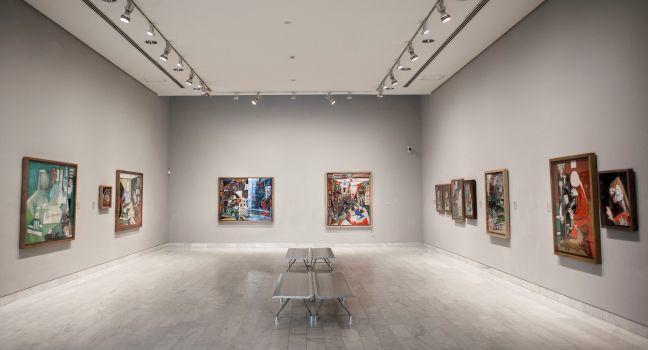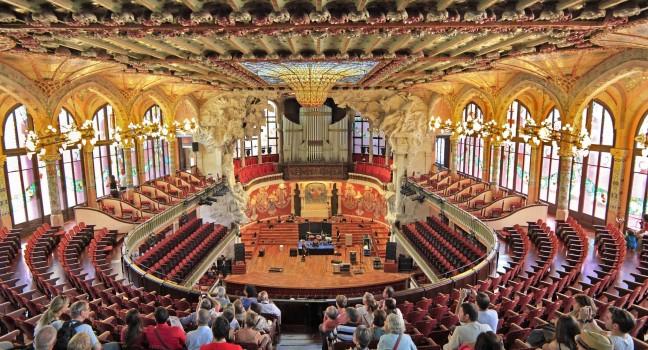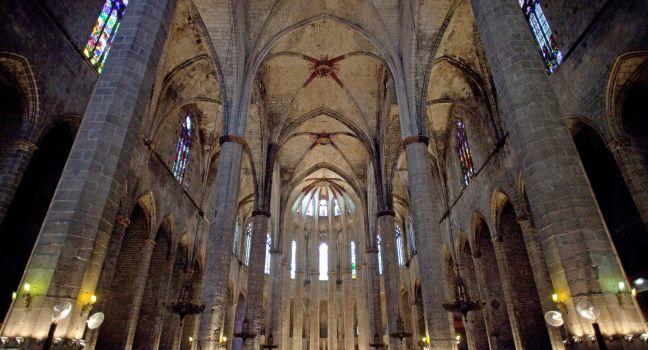An example of early Catalan Gothic architecture, Santa Maria del Mar is extraordinary for its unbroken lines and elegance. At what was then the water's edge, the church was built by stonemasons who chose, fitted, and carved each stone hauled down from the same Montjuïc quarry that provided the sandstone for the 4th-century Roman walls. The medieval numerological symbol for the Virgin Mary, the number eight (or multiples thereof), runs through every element: the 16 octagonal pillars are 2 meters in diameter and spread out into rib vaulting arches at a height of 16 meters; the painted keystones at the apex of the arches are 32 meters from the floor; and the central nave is twice as wide as the lateral naves (8 meters each).
The church survived the fury of anarchists who, in 1936, burned nearly all of Barcelona's churches as a reprisal against the alliance of army, church, and oligarchy during the military rebellion. The basilica, then filled with ornate side chapels and choir stalls, burned for 11 days, nearly crumbling. Restored after the Civil War by a series of Bauhaus-trained architects, the church is now an architectural gem.
The paintings in the keystones overhead represent the Coronation of the Virgin, the Nativity, the Annunciation, the equestrian figure of the father of Pedro IV, King Alfons, and the Barcelona coat of arms. The 34 lateral chapels are dedicated to different saints and images. The first chapel to the left of the altar (No. 20) is the Capella del Santo Cristo (Chapel of the Holy Christ), its stained-glass window an allegory of Barcelona's 1992 Olympic Games. An engraved stone riser beside the door onto Carrer Sombrerers commemorates where San Ignacio de Loyola, founder of the Jesuit Order, begged for alms in 1524 and 1525.
Set aside at least a half-hour to see Santa Maria del Mar, and be sure to check out La Catedral del Mar (The Cathedral of the Sea), by Ildefonso Falcons, which chronicles the construction of the basilica and 14th-century life in Barcelona. Consider joining a guided tour to climb the towers for magnificent rooftop views or to access the crypt. Die-hard enthusiasts will want to sign up for the Santa Maria del Mar at Dusk Tour, an exclusive, 1½-hour experience for small groups that not only lets you visit spaces normally closed to the public, but also enables you to fully appreciate the lighting of the building in addition to its silence and enormity.
Scan weekly magazines to see if there are any concerts being held in the basilica during your visit. The setting and the acoustics make performances here truly memorable.






